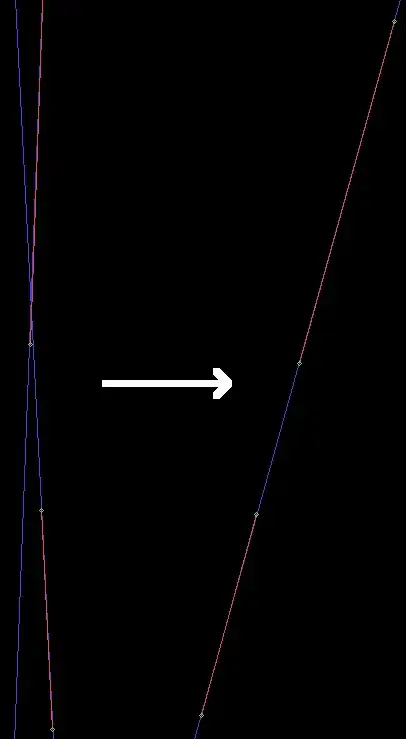I would like to merge two lines having a y = mx + b equation with very close angles. I am simply comparing their angle difference, then I create a new line passing through the middle of these by calculating their m and b average.
This method succeeds when the algorithm encounters two lines with positive values.
The segment on the right has it's m variable set to 0.034, and b variable set to 109.49.
The segment on the left has it's m variable set to 0.017, and b variable set to 128.72.
The averaging method gives a result of m being 0.026 and b with the value of 119.105.
But I am actually stuck in the case where there are two diagonal lines, where one of them has a negative m variable.
The segment on the top right has it's m variable set to 26.837, and b variable set to -44172.254.
The segment on the bottom left has it's m variable set to -19.648, and b variable set to 29264.59.
The averaging method gives a result of m being 3.5945 and b with the value of -7453.8324.
Is there a more efficient method of solving this problem ?

